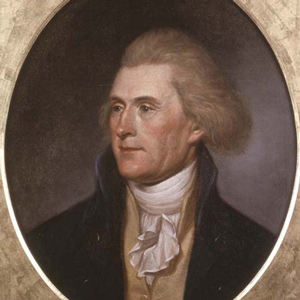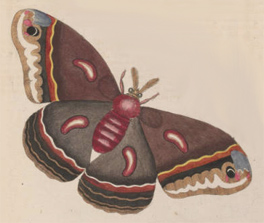
Thomas Jefferson’s leadership of the fledgling American Philosophical Society was appropriate. His perspective was entirely the same as its stated purposes, and his contributions to it have continued to enrich and guide it.

Thomas Jefferson’s leadership of the fledgling American Philosophical Society was appropriate. His perspective was entirely the same as its stated purposes, and his contributions to it have continued to enrich and guide it.

Due to the many unfortunate events which followed Lewis’s death, in 1809, the Indian vocabularies the captains had carefully collected are now lost, and were never made available to the public.

Thomas Jefferson first believed them to be from a kind of lion, which he thought might still survive in the distant wilds of western America. No doubt Lewis had held them too and would be looking for live specimens.

Known now as the “Astronomy Notebook,” this extraordinary document has been an obscure and often neglected detail in the history of the Lewis and Clark Expedition. Transcribed in full with commentary by Robert Bergantino.

Lewis and Clark made celestial observations at “all remarkeable points on the rivers.” Hassler was selected to complete the longitude calculations from that data, but he never finished the job. Jefferson was not satisfied.

The author proposes a few metaphors for the Lewis and Clark story, not in any definitive way, but merely to help us all think about the legacy of the expedition.

Mapping is the human equivalent of an animal marking its territory by leaving scent, spoor, or other traces. Jefferson’s instructions to fix the trading route to the Pacific by observation meant that Lewis and Clark should mark territory.

There were only four notable 18th century naturalists who showed much interest in America’s insects: a young Englishman named Mark Catesby, Finnish botanist Peter Kalm, Philadelphian William Bartram, and Reverend Frederick Melsheimer of New Hampshire.

Although not nearly as celebrated as their botanical and zoological work, Lewis and Clark collected a multitude of mineralogical specimens throughout the expedition.

“the Ocian is imedeately in front and gives us an extensive view of it from Cape disapointment to Point addams,” reported William Clark on 15 November 1805. But he saw no ships at anchor. Nothing.

Narrado tanto en inglés como en español, Daniel Flores narra la historia de una exploración paralela y sureña ahora casi olvidada.

Narrated in both English and Spanish, Daniel Flores tells the story of a parallel, southern exploration now nearly forgotten.

Celestial observations at the Kansas and Missouri river confluence began shortly after 8 a.m. on 27 June 1804. The first observation would provide the data necessary to calculate the magnetic declination.

The life and times of these three explorers intertwined in a number of odd and interesting ways, often brought together by far-reaching hand of Thomas Jefferson. Tracing these connections opens a window onto every conceivable aspect of the period.

The advice Dr. Rush had given Lewis often sounds rather odd or useless by modern standards, and wasn’t followed to the letter by the captains, but it fulfilled Jefferson’s request.

One of Thomas Jefferson’s favorite compositions was the Sonata for Violin and Continuo, Opus 5, written by Corelli. Using a violin such as Jefferson owned, violinist Samuel Taylor plays the theme and two of the variations.

After some eight months of planning and discussion, President Thomas Jefferson handed his twenty-eight-year-old secretary, Captain Meriwether Lewis, a letter containing instructions for the conduct of one of the most significant undertakings in American history.

Determining the extent of the upper Missouri watershed was the single most important task Lewis and Clark faced. Their search for the westernmost source of the Jefferson River nearly cost them their lives.

Easter week in Paris, 1803, was truly momentous for the young United States of America. The American Minister to France, Robert R. Livingston was sent to discuss the difficult question of New Orleans, the Mississippi and Franco-American relations.

The American fauna was not made up of degenerate forms of Old World animals. And it was not beyond the realm of possibility to find those elusive mastodons and megalonyxes alive. To imagine this sort of thing must have inspired awe in Lewis.